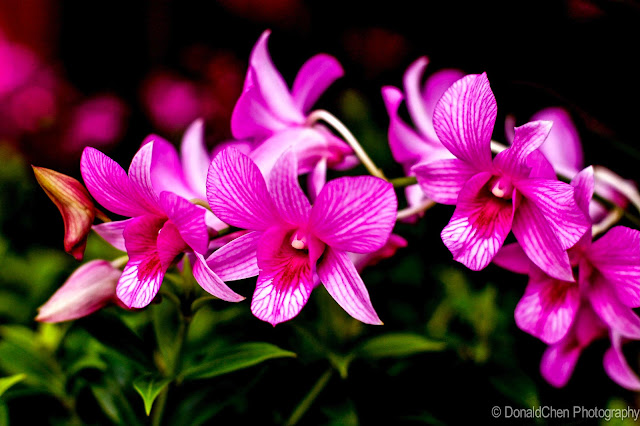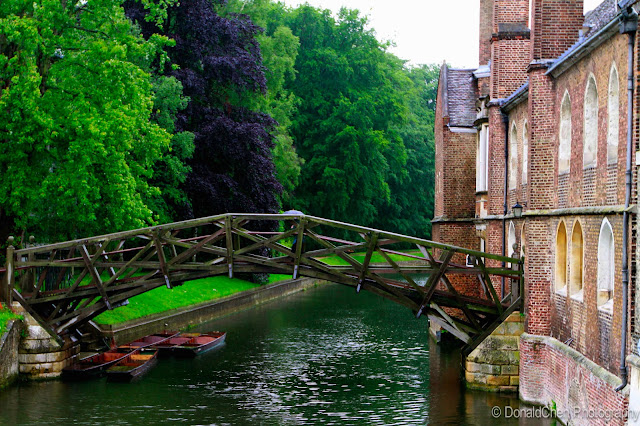Like memory, a photo is an awesome gift that captures a magical moment in time - the only physical link to a fragile memory.
Monday, February 18, 2013
Philippine Ground Orchid
Scientific Name: Spathoglottis plicata
Common Name: Philippine Ground Orchid
The flowers have 5, oval-shaped, pink, purple, or white tepals (2 side petals and 3 petal-like sepals) and a similarly colored, spade-shaped labellum. The flowers are followed by 6-ribbed seed capsules that split open to release the minute, dustlike seeds into the air. The leaves emerge from pseudo bulbs and are bright green, linear-lanceolate, and distinctively plicate (having fanlike folds along their length).
Copyright DonaldChen Photography
Sunday, February 17, 2013
Friday, February 15, 2013
Pink Orchid
A blooming pink orchid. Taken in the morning when the morning dew is still lingering on the flower buds.
Copyright DonaldChen Photography
Copyright DonaldChen Photography
Thursday, February 14, 2013
Happy Valentine's Day Flower
A pretty pink flower from Sentosa to celebrate Happy Valentine's Day !!
Copyright DonaldChen Photography
Saturday, February 9, 2013
Temple of Heaven
The Temple of Heaven, built in 1420, used to be a place where emperors of the Ming and Qing dynasties went to worship Heaven and offer sacrifices to pray for bumper harvests and favorable rain. Most of the structures we see today were constructed in the Qing Dynasty. The compound wall was built in a semi-circle in the north and a square in the south. Surrounded by double annular walls, the Temple of Heaven is divided into an inner part and an outer part. The whole area is 273 hectares. In the inner part stand ancient architectural complexes including the Hall of Prayer for Good Harvests (picture).
Copyright DonaldChen Photography
Friday, February 8, 2013
Solitary Speedboat
I chanced upon this solitary speedboat by itself as I walked along the beach in a nice afternoon weather, beside Lone Pine resort hotel in Penang, Malaysia.
Penang is a popular tourist destination with its beautiful coasts and beaches. A fascinating fusion of the East and West, Penang embraces modernity while retaining its traditions and old world charm. These are reflected in its harmonious multiracial populace and well-preserved heritage buildings which led to George Town being accorded a listing as a UNESCO World Cultural Heritage Site recently.
Long regarded as the food capital of Malaysia, Penang also entices visitors with its popular hawker fares and scrumptious cuisines.
Copyright DonaldChen Photography
Labels:
alone,
beach,
donald chen,
donaldchen,
donaldchen photography,
lone pine,
malaysia,
motorboat,
penang,
resort,
sea,
solitary,
solitary speedboat,
solitude,
speedboat
Location:
Penang, Malaysia
Tuesday, February 5, 2013
Parasailing
Parasailing at the beach front of Lone Pine resort hotel in Penang, Malaysia.
Tucked in an idyllic spot along Penang’s coastline, Lone Pine is Batu Ferringhi’s only luxury boutique hotel. Renewed and rejuvenated after a lovingly undertaken restoration, Penang’s favourite beachside boutique resort reopens its doors refreshed in design and facilities, but still infused with the same colonial spirit and idyllic charm that has made it one of Penang’s legendary hotels. The perfect place for creating memories never to be forgotten.
On my returned visit to the renewed and rejuvenated resort, I found the boutique resort to be very charming, the spacious reception area with free wifi access, the relaxed outdoor dining, the quaint swimming pool with the colonial house beside it and of course the snugly hammocks strung between trees in the open field made for a very nice and enjoyable stay at Lone Pine!!
Copyright DonaldChen Photography
Monday, February 4, 2013
Mathematical Bridge
The Mathematical Bridge, designed by William Etheridge, and built by James Essex in 1749, is the popular name of a wooden footbridge that connects two parts of Queens' College in Cambridge University in London. Its official name is simply the Wooden Bridge.
A popular fable is that the bridge was designed and built by Sir Isaac Newton without the use of nuts or bolts.
Copyright DonaldChen Photography
Sunday, February 3, 2013
Puffin
The atlantic puffins are stocky, short-winged and short-tailed birds, with black upper parts and white or brownish-grey underparts. The head has a black cap, the face is mainly white, and the feet are orange-red. The bill appears large and colourful. They can be found in Staffa Island @Scotland.
Copyright DonaldChen Photography
Glencoe Lochan Reflection
Glencoe Lochan @Scotland. The ideal place to enjoy stunning Highland scenery in a tranquil setting.
Glencoe Lochan is a tract of forest located just north of Glencoe village in the Scottish Highlands. It was transplanted from the Pacific Northwest of Canada in the nineteenth century by Donald Alexander Smith, 1st Baron Strathcona and Mount Royal.
After acquiring the Glencoe Estate in 1895, Donald Alexander Smith and his wife, Isabella Sophia Hardisty, moved from Canada to Scotland. Soon after their arrival, Isabella became increasingly homesick for her ancestral lands in Canada. In an attempt to abate his wife's depression, Donald Alexander Smith had this forest painstakingly planted, and granted it to her as a private refuge. The lochan is currently under the care of the Forestry Commission, there are trails around it, parking and fishing for brown trout is possible.
The most interesting discovery you can make is by taking one of the four trails available. As you walk the trails, you will discover beautiful flowers, interesting plants and trees, the very scenic lake view, some nice picture spots, and rest corners that you can take breaks .... If you are into nature, you must drop by this very scenic and tranquil forest park!!
Copyright DonaldChen Photography
Saturday, February 2, 2013
Glencoe Lochan @Scotland
Glencoe Lochan in Scotland is the ideal place to enjoy stunning Highland scenery in a tranquil setting. Embark on a gentle walk, take in the fresh air and nature's sight and sound around the water's edge to a more challenging hill walk or a relaxed afternoon's picnic. Smell the many varieties of flowers as you walk around the lake.
In 1895 Lord Strathcona created this beautiful lochan and woodland for his Canadian wife Isabella, who was of Native American descent. Unfortunately recreating a bit of the wild Pacific Northwest in Glencoe didn't help the homesick Isabella settle there, but it did leave a beautiful landscape for all to enjoy.
The lochan is also stocked with rainbow trout. The four easy-access fishing platforms make it an ideal fishing spot for fishing enthusiasts to spend a lazy afternoon fishing and appreciating the scenic landscape.
This picture was taken with a Canon 7D using the 16-35mm F2.8 wide-angle lens.
Copyright DonaldChen Photography
Friday, February 1, 2013
Beijing National Stadium Reflection
Beijing National Stadium a.k.a "The Bird's Nest" officially opened at a ceremony on 28 June 2008. Ground was broken on 24 December 2003. It is the world's largest steel structure and the most complex stadium ever constructed. It is 333 meters long from north to south, 294 meters wide from east to west, the highest point is 68.5 meters and the lowest point is 42.8 meters. At its height, 17,000 construction workers worked on the stadium.
Located at the Olympic Green about 8km from the center of Beijing, the stadium cost US$423 million and could seat a capacity of 80,000 spectators. The design was awarded to a submission from the Swiss architecture firm Herzog & de Meuron in April 2003 after a bidding process that included 13 final submissions. The design, which originated from the study of Chinese ceramics, implemented steel beams giving the stadium the appearance of a bird's nest. Leading Chinese artist Ai Weiwei was the artistic consultant on the project. The design came from the idea of a single thread wrapped round a ball. Layers of logical geometry give the appearance of randomness and the organic shape of the structure.
The Bird's Nest hosted the opening ceremony, athletic events, the football final and the closing ceremony of the 2008 Beijing Olympic Games, which took place from August 8 to August 24, 2008.
This picture was taken at dusk as the sun was setting in front of a foreground pond to create the nice reflection effect. Gear used was a Canon 7D with a 24-105mm F4 lens, on a tripod.
Copyright DonaldChen Photography
Subscribe to:
Comments (Atom)











